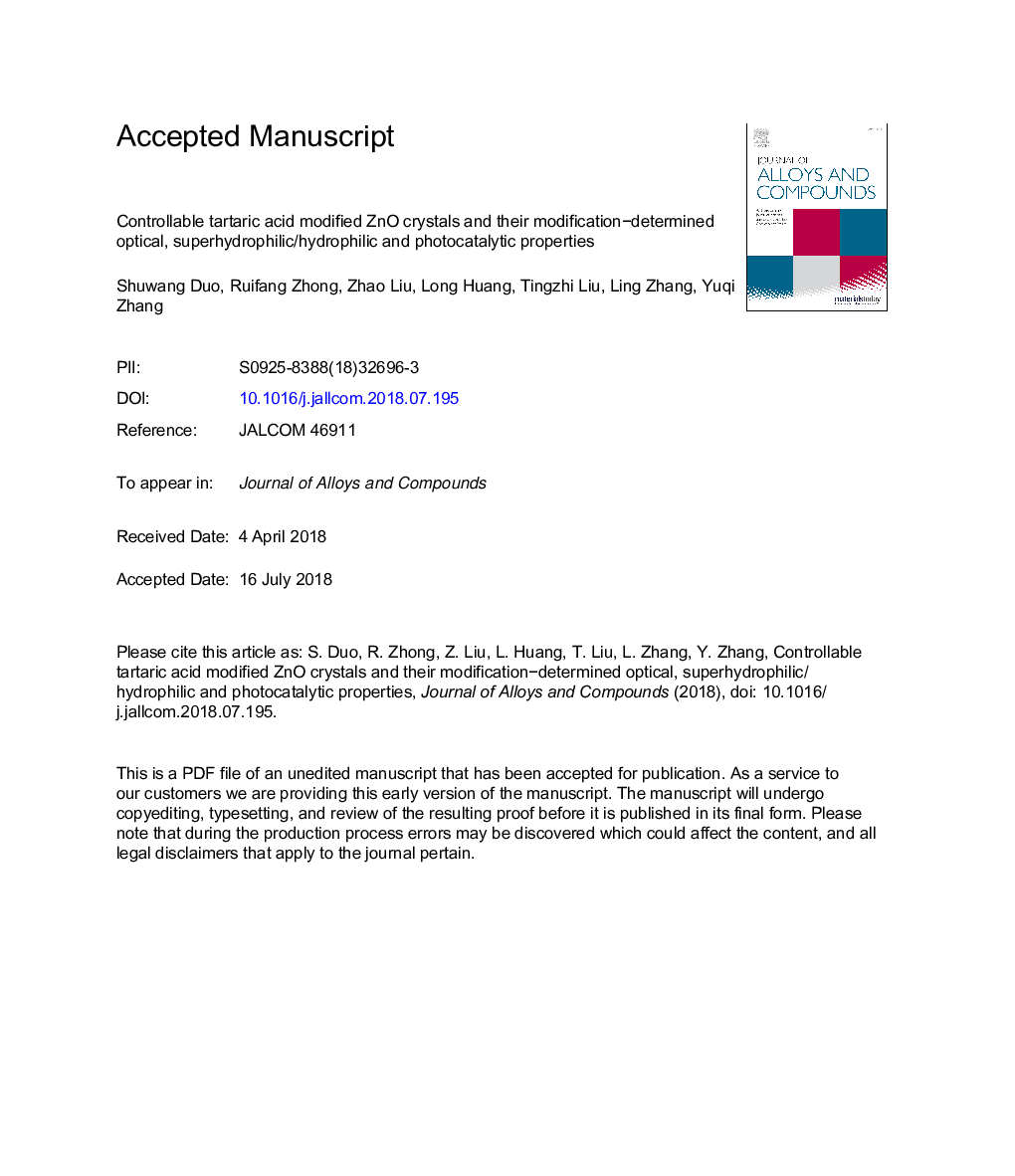| Article ID | Journal | Published Year | Pages | File Type |
|---|---|---|---|---|
| 7990119 | Journal of Alloys and Compounds | 2018 | 43 Pages |
Abstract
The strong, moderate and weak tartaric acid (TA) modified ZnO crystals corresponding to rich, moderate, few or no surface defects were prepared by controllable hydrothermal method respectively. With the temperatures increasing from 120 to 180â¯Â°C, the ZnO properties are converted from strong TA modification via bidentate coordination, large band gap (3.938â¯eV), compressive stress, visible emission, low photoactivity, and superhydrophilicity to weak and moderate TA modification via monodentate coordination, low band gap, tensile stress, dominant UV emission, high photodegradation, and hydrophilicity. The temperature controls TA modification on ZnO surface, while TA modification further determines the ZnO properties. UV and Vis emission intensities, the number of surface defects, superhydrophilicity/hydrophilicity and photocatalytic performance can be tuned via controlling the TA modification on ZnO surface. For example, the dominant UV emission can be obtained without any DLE via week ZnO surface modification. The MB removal efficiency of S9 can rapidly reach 90% within 45â¯min. The KMB and KMO curves have the similar change tendency. The highest KMB and KMO are 4.22â¯Ãâ¯10â2 (S9) and 1.93â¯Ãâ¯10â2 (S4) minâ1 respectively. The strong TAâmodified S1, S2 and weak TAâmodified S5 possess the superhydrophilicity with WCA of 0°, 6.01° and 9.13° respectively. The photocatalytic activity of ZnO significantly decreases on strong TAâmodified surface due to the steric hindrance of TA, while the ZnO hydrophilicity is proportional to its photocatalytic efficiency on weak TAâmodified surface. The exposed (002) and (100) hydrophilic facets of ZnO build up the direct relationship between its photocatalysis and hydrophilicity. The appropriate ZnO hydrophilicity and TA modification can form a perfect combination, which products the synergetic effect of high hydrophilicity and photocatalytic activity.
Related Topics
Physical Sciences and Engineering
Materials Science
Metals and Alloys
Authors
Shuwang Duo, Ling Zhang, Ruifang Zhong, Zhao Liu, Long Huang, Tingzhi Liu, Yuqi Zhang,
